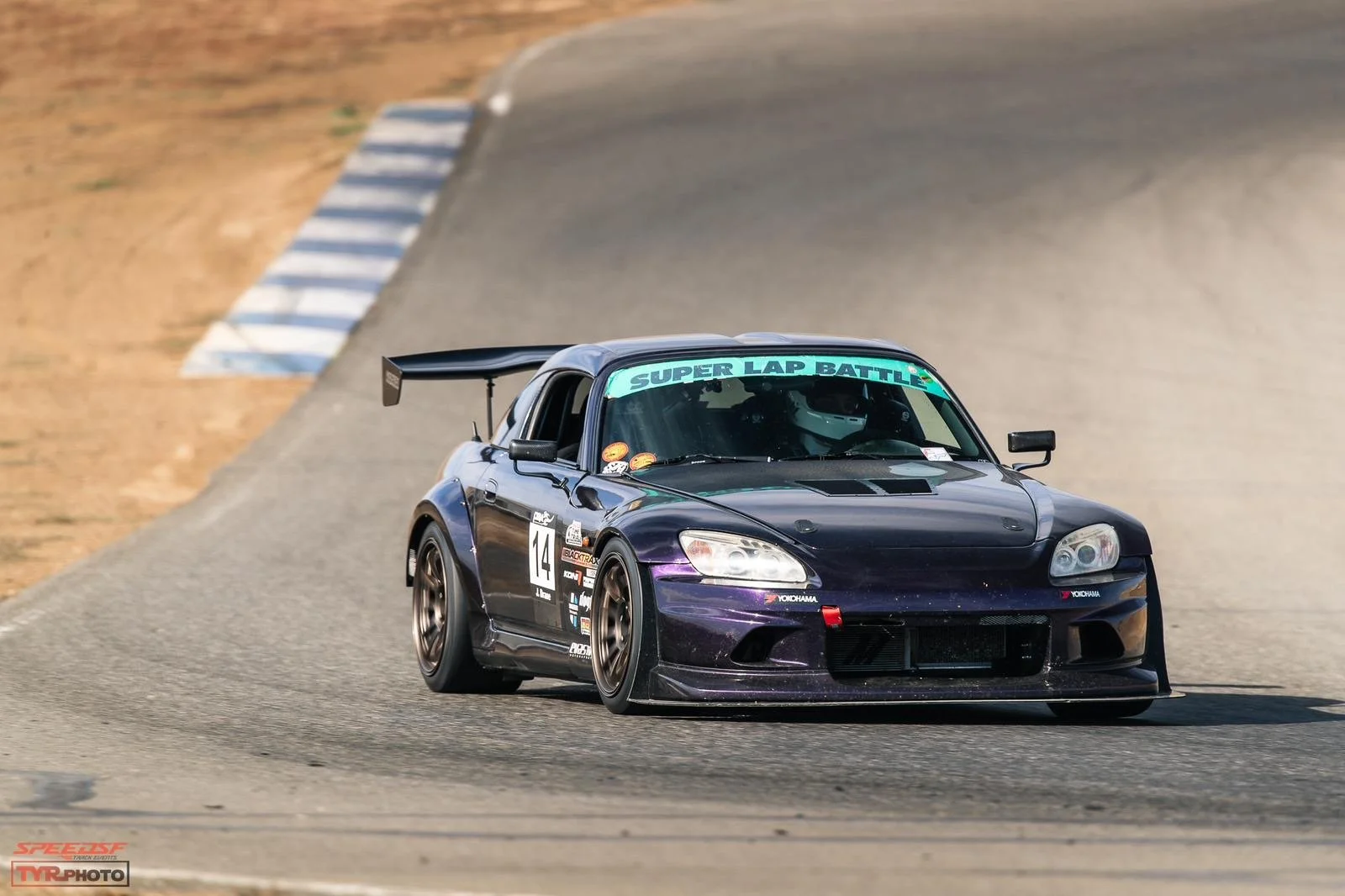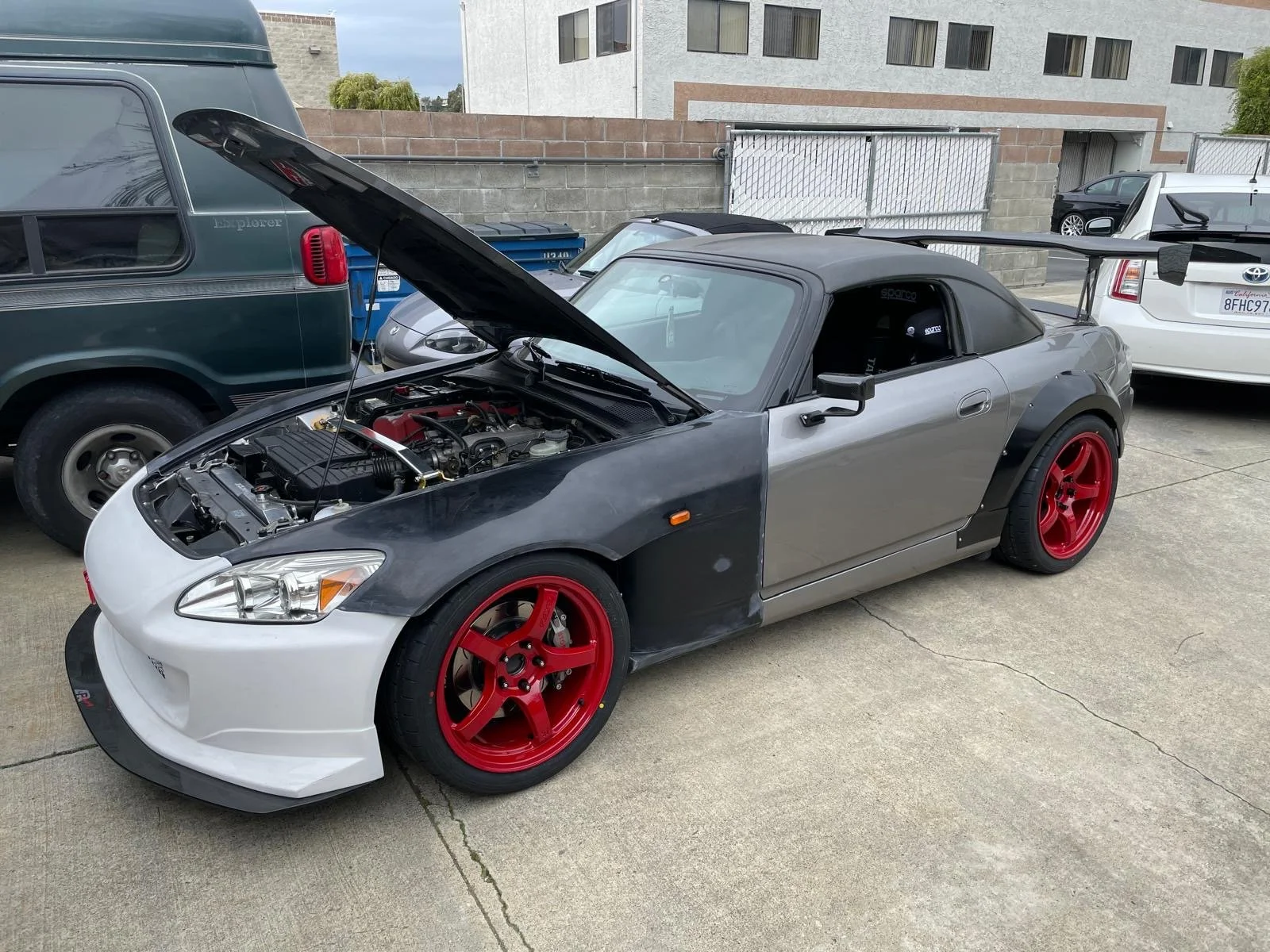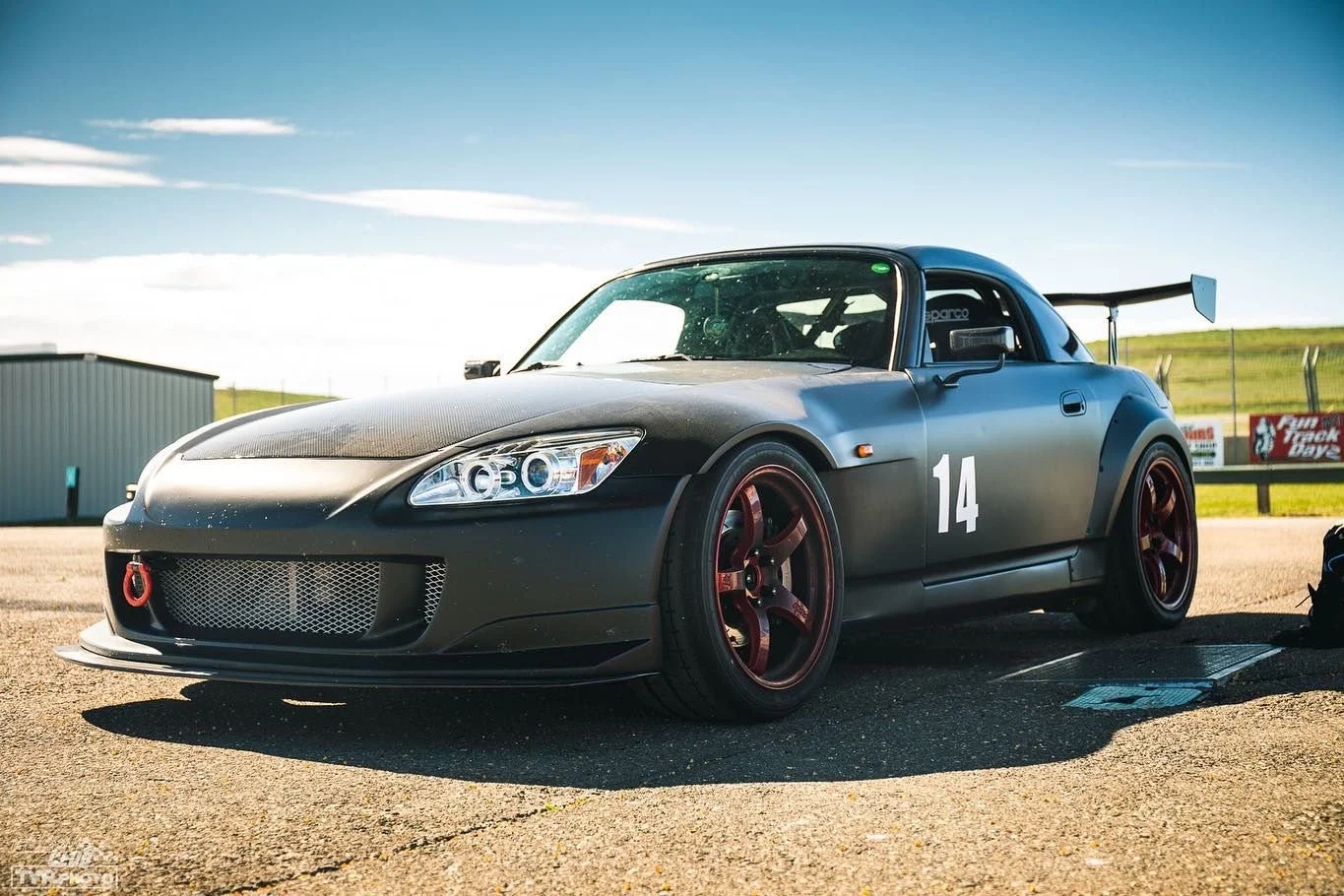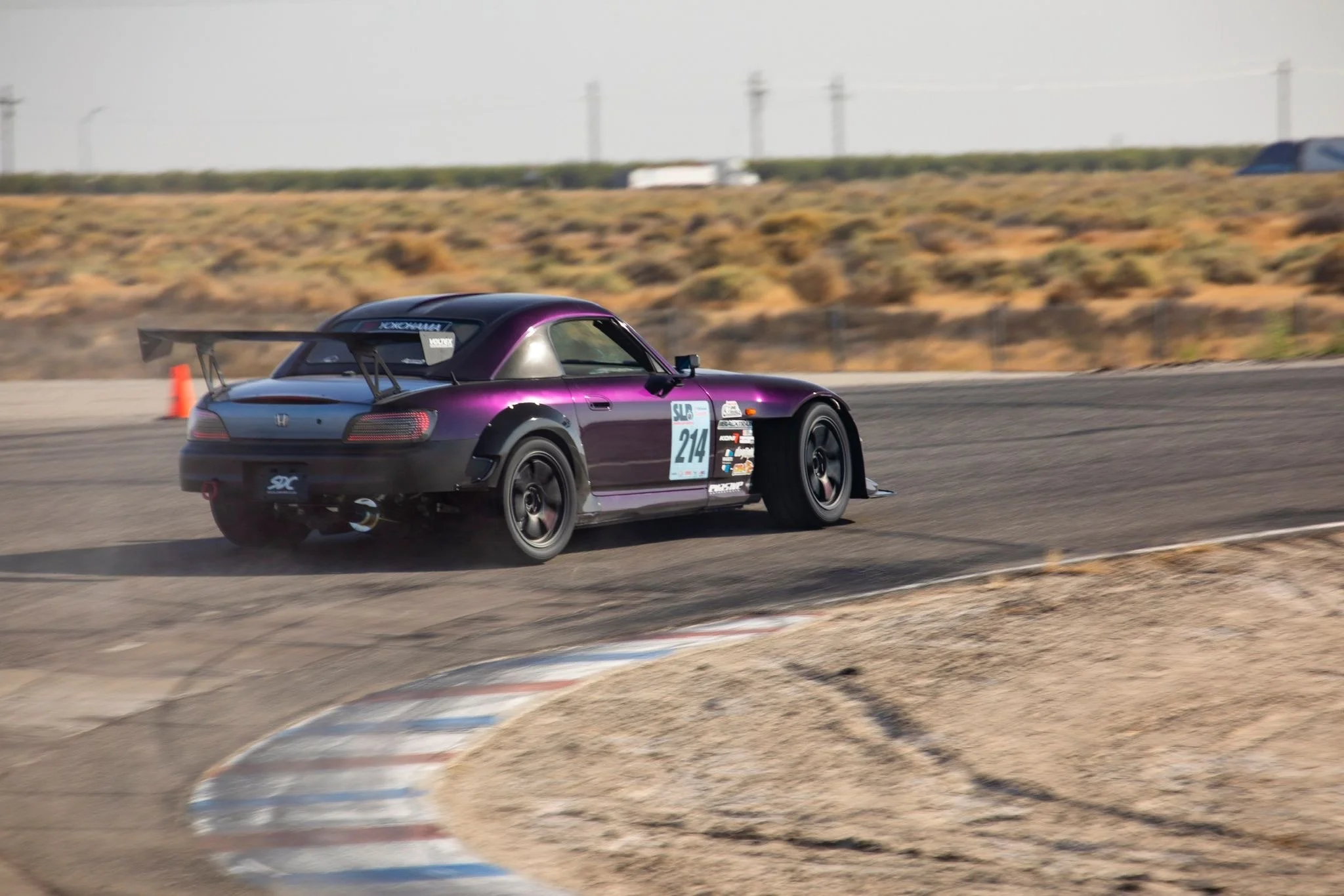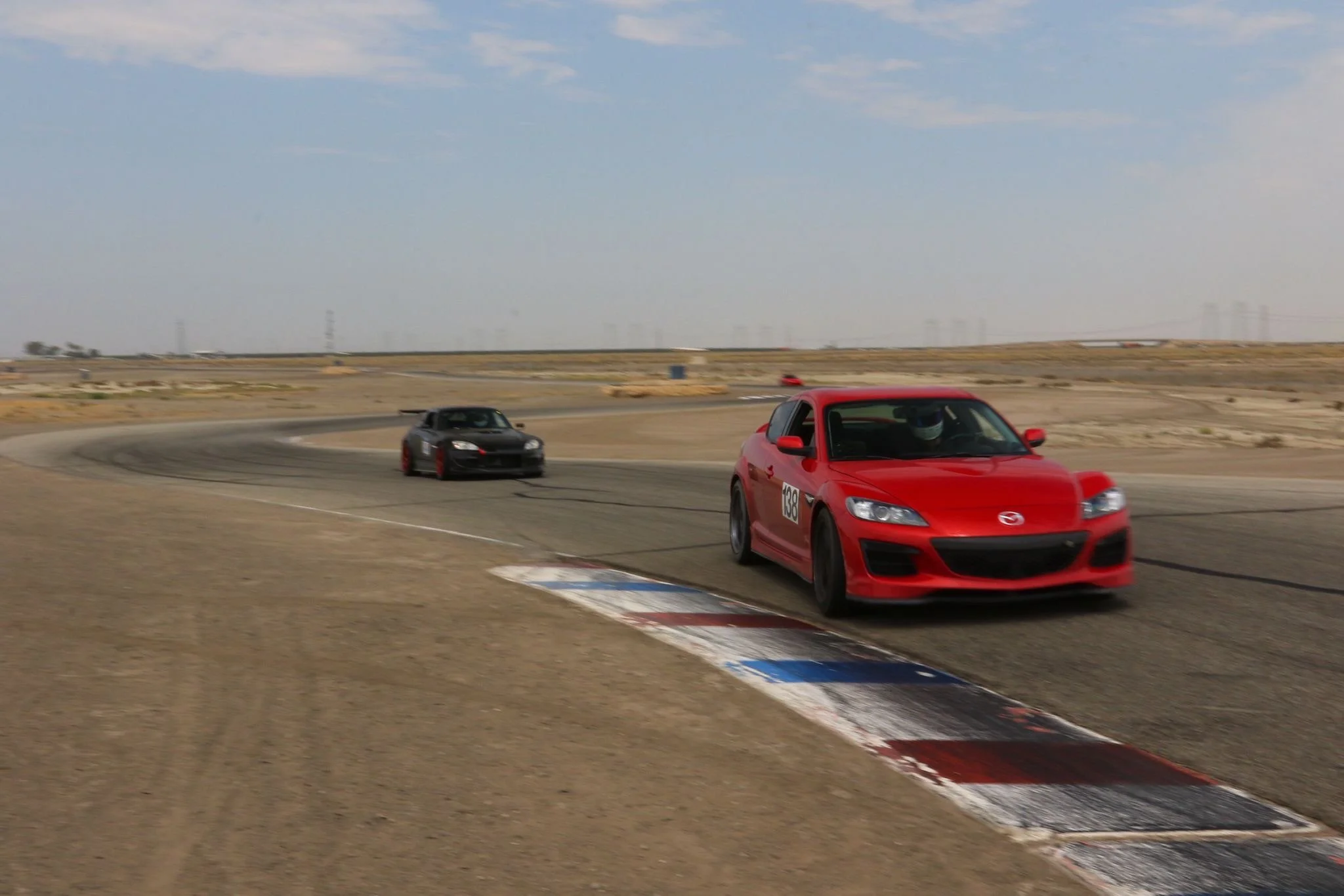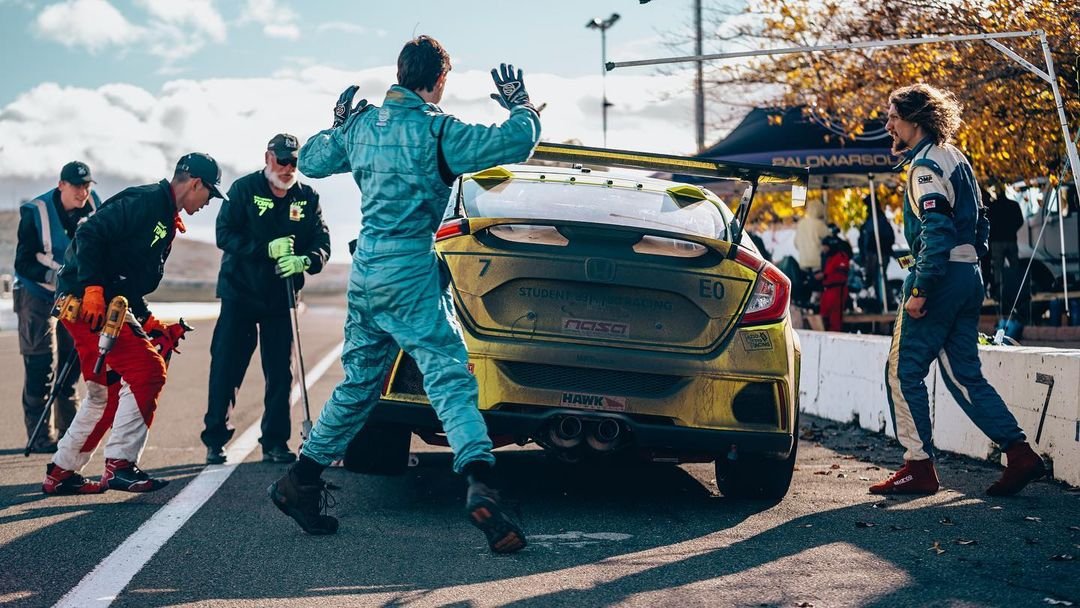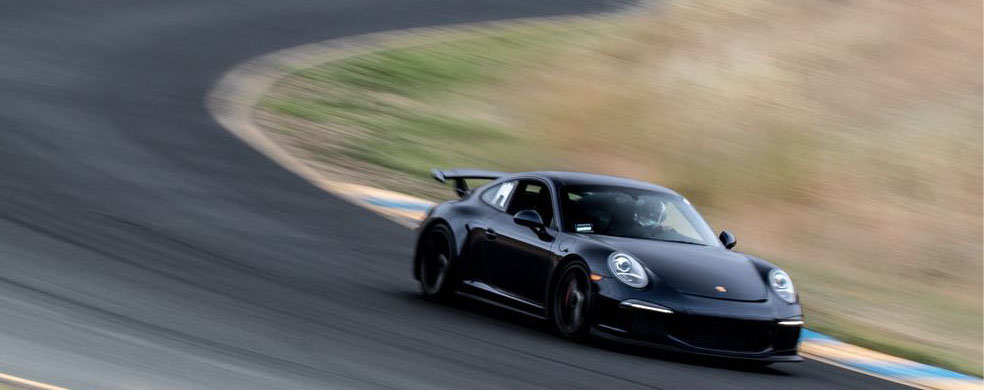
Joe’s AP1 S2000: Continuing Education
A couple years before forty, Joe Drane decided to finally give track days a try. Like with everything he’s pursued, he dove in with two feet and built a stunning S2000 in record time.
It wasn’t until Joe Drane moved out to California at the ripe age of 38 that he was able to try track driving for himself. Being a natural tinkerer and a bit of a hot rodder growing up, track driving had been a lifelong dream, but the opportunities for that sort of thing in rural Florida were few and far between.
After teaching him the ins and outs of network engineering, Joe started learning the cloud and found a few roles with startups in Texas. This created a focus on execution and continuous learning while also placing high value in data helped him put together a stellar resume in short time. This almost obsessive approach would later help Joe learn at a ridiculously rapid rate when learning the racing ropes.
The Land of Milk and Honey
After relocating to San Francisco to start a new role with Facebook, the assortment of beautiful sports cars lining the streets suggested he might be in the right place to learn to drive on track. He searched for ins on the pages of the local sanctioning bodies until he found an easier, more cost-effective way to dip his toe in the water.
Meanwhile, the need for a new outlet was getting harder to ignore. COVID weighed heavily on him, and while he loved his new job, it didn’t offer the distraction he needed mid-pandemic.
When he proposed running a few lapping days one weekend, his wife not only supported him in his decision, she helped him find an appropriate track car. Incidentally, the two had met at work after Joe spotted her leaving her S2000 in the parking lot. It only seemed right that such a car, the conversation starter, would help him start another love affair.
And so he picked out the cheapest first-gen S2000 he could find. This was several years ago, but even by the standards of the time, this car was affordable — and for good reason. “It was just a mess. It had no rear glass, the check engine light was on, the wiring was a rat’s nest, and the motor was ticking. I spent the winter restoring it, but I didn’t realize just how bad things were until I started working on it.”
Growing Pains
“I ran into some issues installing the aftermarket parts. The radiator wasn’t sitting low enough for the hood to close. I took it into the shop at BlackTrax to have it inspected, and there the mess continued to unfold. The radiator supports were bent, and I couldn’t purchase new ones anymore. I had to source the brackets from two fender cutouts from eBay.
Then we pulled the cylinder head and saw the valve retainers were cracked, there was a ton of carbon on the valves, and two of the cylinder walls were scarred. After ten track days, the transmission blew third gear. Oh man, what a nightmare it was.”
To mend the ailing engine and fortify it for track use, he replaced the block with rebuilt F22’s, then fitted a Radium catch can as well as Mishimoto’s radiator and oil cooler. Not eager to deal with another blown F-series, he wisely spent a few thousand more on a Link G4+ ECU to employ several failsafes and extract everything from the motor — mainly more mid-range torque and a peak of 227 horsepower at the wheels.The Link was then paired to an AiM MXG dash which to give him alerts and relay lap data.
Despite the early hurdles he had to cover, he remained willing and able to push on. The obsessive drive which fueled Joe’s career now had a second outlet; allowing him to research the engineering involved, pick parts, test them on track, and build a more supportive social network than the one which work provided him.
As it gave him a new lease on life, he didn’t hesitate to spend whatever was needed to turn this rough example of an S2000 into something exceptional. Within a few months, he’d added a long list of modifications to try and breathe some new life into this aging chassis.
After investing so much in the performance side of things, it made sense to apply an Inozetek wrap to help the car pop.
Among those additions were an APR splitter, a Voltex Type II wing, Rockstar Garage’s Feal two-way coilovers, and Stoptech C43 (F) and C42 big (R) brakes. Studying hours of onboard footage — namely Nate Hackman’s banzai laps — helped him understand just how much harder he could apply the brakes and how severely late he was getting to throttle.
In the interest of getting up to speed quickly, he skipped the cheap tires and went straight to a set of Yokohama Advan A052s, then wrapped them around a set of 18 x 9.5” Advan Gram Lights.
Though he’d already spent a small fortune on parts, never once did Joe agonize over expense during this introductory period. “I decided to pay for an education in racing since I feel it usually pays dividends,” he said. When his engine tuner Jei from BlackTrax offered to tag along to one HPDE at Thunderhill and teach Joe to study data, he jumped at the opportunity. “The telemetry revealed I was shifting a little too much, so we figured out the right shift points and instantly cut a couple seconds off my PB.”
The car was capable and reassuring enough for Joe to continue pushing, but asking more the car led to the standard Torsen differential failing. In its place, Joe put a Puddymod 1.5-way OSG and found the incremental improvement in power-down and stability motivating enough to invest in one other area that wasn’t quite up to snuff: dampers.
Joe knew the top-shelf option would make the car more quicker, more predictable, and less taxing to drive, so he splurged on a set of Blacktrax-built Penske 8300s. Even without much knob turning, the new dampers revitalized the car and helped Joe find the confidence to commit to the quick corners. “My favorite mod, without question. I dropped six seconds off my previous best the first time out on the Penskes. Worth every penny.”
Continuing Education
Learning to wrench and approach the track from a theoretical perspective helped him progress, but never having attended a racing school, he started to wonder if there were ways to improve his technique post-haste. He enrolled in a few drift courses to study the art of oversteering, and soon felt at ease asking the S2000 to rotate a little more than before.
Both his approach and the S2000’s setup are far from perfect, and Joe’s wise enough to admit that. “I haven’t thought much about adjusting the dampers — most of the time I just leave them in a neutral position and try to drive as best as I can.”
But the results from a relatively short time spent on track speak for themselves. He’s learned at a remarkable rate and, with a little more guidance from the knowledgeable group of friends he’s made recently, he’s bound to be fighting for podiums at the front of the S3 class sometime soon. He still has a few points to play with — and they’ll go towards a Zebulon rear wing, a larger Alumalite splitter, and Professional Awesome tunnels.
Joe’s studious nature has also helped him better understand the endless tradeoffs that building a track car requires. While the major cost associated with getting a rough car off the ground can eat into an aspiring driver’s budget, the peace of mind that comes from driving a flawed, imperfect car can help a driver push hard — harder than they likely would in a pristine example. That’s why he has no regrets taking the rocky but fruitful and informative path he took.
Near-Win at the 25 Hours of Thunderhill: Team Tazio Ottis Racing's Day-Long Battle
Mechanical troubles, great pace, a tough competitor, and changing conditions made this year’s 25 Hours of Thunderhill a nail-biter for Team Tazio Ottis Racing. Even enduros can provide close finishes like this team had.
Four days before Friday’s Final Practice, Team Tazio Ottis Racing was treated to a reassuring practice at Sonoma Raceway with Speed SF Track Events. It had been the cherry on the sundae after a successful season in WERC E0.
The second year of competition had given Tazio and his team to sort out their FK8 Civic Type R. Their transmission, the FK8’s weak link, had been fortified with stronger third and fourth gears, which has served them well the whole season.
Concerned for the health of the drivetrain, they decided to cap the power at a healthy and reliable 300 horsepower and seek out more speed by reducing the total wet weight to 2,850 pounds with Seibon carbon parts and a titanium Remark exhaust. Along with that car, they had a team of four strong drivers: Tazio Ottis and Daniel Wu, the team’s regulars, aided by Patrick Chio (Speed SF) and Will Wattawongkiri (WRTeknica) for the 25.
Unfortunately, they seemed to have snagged a bad part. During final practice for the 25, third gear blew. After a successful season without gearbox issues, it came as a surprise.
The team was stretched thin hustling to repair the box with a used third gear—one with eighty race hours on it. The effort took them until 11:30 that night, and the delay had kept them from attending qualifying and relegated them to the last position on the grid. Thankfully, they had a long race ahead of them.
Rolling around to take the green flag in last, Will Wattawongkiri was feeling the weight on his shoulders. All of a sudden, the car wouldn’t move. It turned out the driveshaft wasn’t seated properly, so it came out and they brought the car back in the pits and lost six laps. Clearly they weren’t off the start that they wanted.
There was something to lift their spirits, though: the speed was there. Compared to their main rivals on the DIG Motorsport team, their pace was comparable and so their fuel economy was superior. Perhaps the Mustang’s dry performance was better, but things didn’t stay dry long enough for them to benefit much.
The weather was tricky; starting wet, staying wet, and eventually drying slowly, but the Honda was well suited to these conditions. An OS Giken differential and the added weight over the driven wheels helped when the track was slippery. All this was more impressive by the fact that the hasty gearbox repair kept them from getting a good alignment. As a result, they had to swap the fronts out every two hours.
With a prediction of thirty percent rain a little before midnight, they opted for their grooved Toyo RRs—their dry tires. “The difference in lap times was as much as twenty-three seconds, but it was a little risky to go to dries. The dry line was obvious, but it was extremely cold and wet off-line. Passing off the dry line would result in a massive loss of traction, so we had to pick their passes especially carefully,” Patrick said.
Thankfully, they gambled intelligently. In the slippery conditions, the Civic enjoyed a real advantage over the DIG Mustang, which struggled to put the power down. Additionally, the team’s overall pace—very similar across all four drivers— was not limited by the equipment. “We never had to soft pedal the whole race—we all pushed really hard,” Tazio noted.
TTOR were clawing their way back to the front of their race when the fuel started dropping to a worrying level and the fog rolled across the surface. When the fog was deemed thick enough to warrant postponing the race, they had to park the car on the front straight and leave it alone until the race resumed.
“We were catching up lap by lap until three in the morning when the fog rolled in. We were only two laps down when the race was stopped,” Patrick said.
Around 7 AM, the conditions were deemed acceptable for a restart. The team gathered around their new car and stuck Patrick Chio in the seat.
Their Type R had parked on the right side of the track and DIG’s Mustang had parked on the left. A prototype ahead stalled at the restart and boxed the left lane, though that hadn’t stopped the NASA marshall from continuing to wave the right line to move, resulting in a reshuffling of the grid that didn’t sit too well with the DIG team. However, the Civic needed to refuel and had to pit as soon as the green flag dropped. (Note: During a full course yellow condition, the pit lane is closed, prohibiting any team to do any work on their vehicles).
Around that time, DIG lodged a protest about passing during the restart, which Tazio and the team chose to debate initially, but did not persist in fighting the call. They accepted the compromise presented to them: a half-penalty drive through, which they served an hour afterwards.
Thankfully, they could make up for this minor setback. The similar pace among the TTOR drivers meant none of them had to double-stint. To improve matters, they could lap fast enough to push DIG’s fastest driver into running a triple stint and driving quite defensively. The Type R was catching up lap after lap and finally when, with Will Wattawongkiri at the wheel, they eventually passed the DIG Mustang in the twenty-third hour; giving them the class lead and a ninth-place-overall standing.
The actual action in some endurance races only lasts a dozen laps, but that was not the case here. Tazio enjoyed a multi-lap battle with DIG’s Michael Whelden. “Michael was making his car very wide and I was trying to get in his head by flashing my high beams. Honestly, that whole stint felt like a sprint race!”
Roughly one hundred minutes from the end, TTOR made their final pit stop. While stuck in the pits, the DIG Mustang regained the lead of E0, though they hadn’t yet pitted for refuel and we were aiming to repass them and lead the race til the end. They planned to pass; pace was still very strong—until third and fourth gear broke . They had to back off, using fifth in most places, minding the car, and watching their delta grow and grow.
Fifty minutes from the finish, they had to make a decision. “We could have continued running in fifth gear, but the transmission was making a lot of noise. We wanted to avoid blowing up the gearbox and leaving oil all over the track, so we decided to retire the car,” Patrick explained.
“It just made sense. Plus, we wouldn’t have been able to make up the deficit. It was the right thing to do at that point,” Tazio added.
“While we spent many hours in preparation for the race, picked great endurance components, hired a lineup of strong drivers, our team executed perfect pit stops, the 25 was not guaranteed—it never is. The mechanical failures during the last hour made our hearts sink, and we still feel the pain of losing—we were so close to crossing the finish line in first place,” Patrick reflected.
“We couldn’t have done it without our excellent crew and our sponsors. We’ve learned a lot about the car and the competition, and we’ll come back stronger next year.”
Thanks to all who supported TTOR:
Aventon E-Bikes
Honda Performance Development
Toyo Tires
Greddy
Seibon
Inozetek
Titan 7 wheels
Paragon Performance Brakes
Clutch Masters
Hybrid Racing
PTP Turbo Blankets
OS Giken
APR Performance
Remark Exhaust
Student Driver
Speed SF
WRTeknica


